Books by Ignacio Rodríguez Temiño

El expolio está considerado como la principal externalidad que afecta a la conservación del patri... more El expolio está considerado como la principal externalidad que afecta a la conservación del patrimonio arqueológico, por encima incluso de la destrucción ocasionada por las obras públicas. Esta depauperación progresiva de nuestra riqueza cultural se caracteriza por perpetrarse de manera voluntaria y consciente y perseguir el lucro privado menoscabando el interés público. En nuestro país, el tipo de expolio arqueológico más frecuente está asociado al uso de aparatos detectores de metales, aunque el acecho al patrimonio cultural que yace en los fondos marinos también está adquiriendo tintes alarmantes. En esta obra se analizan las modalidades más conocidas de expolio arqueológico terrestre y submarino, poniéndose en evidencia el desconocimiento profundo que tenemos sobre su magnitud. Por otra parte, se profundiza sobre la alarma social producida por estos hechos, sobre todo cuando saltan a los medios de comunicación, y se presentan los instrumentos jurídicos y administrativos de los que dispone el Estado para combatir esta lacra. Sin embargo, el tono de la obra es optimista, como refleja su título. La experiencia en la lucha contra el expolio arqueológico llevada a cabo en Andalucía, sobre todo en la provincia de Sevilla (la más afectada por este fenómeno de todo el ámbito estatal), muestra que es posible reducirlo a unos límites asumibles.
Información del libro Excavaciones arqueológicas en Écija: diciembre 1984.
Chapters in books by Ignacio Rodríguez Temiño
Tenue est mendacium Rethinking Fakes and Authorship in Classical, Late Antique & Early Christian Works, 2021
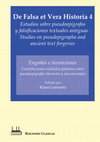
Klaus Lennartz (ed.). Engaños e invenciones · Contribuciones multidisciplinares sobre pseudoepígrafos literarios y documentales. (De falsa et vera historia 4), Ediciones Clásicas, Madrid 2021 (ISBN: 978-84- 7882-875-3), 403–414., 2021
In 2006, news broke of the discovery of ostraca bearing text in Latin and Basque as well as Chris... more In 2006, news broke of the discovery of ostraca bearing text in Latin and Basque as well as Christian drawings during the 2005 and 2006 excavation campaigns at the Iruña-Veleia site in Álava, Spain. In 2008, these pieces were conclusively shown to be fakes. Faced with this deception carried out by some of the directors of the archaeological excavations, the Provincial Council of Alava took those responsible for the forgery to court. The court convicted them of several crimes in 2020. This paper will analyse the content of this sentence.
Resumen: En 2006, se conoció la noticia del descubrimiento de texto con ostraca en latín y euskera, así como dibujos cristianos, durante las campañas de excavación de 2005 y 2006 en el sitio de Iruña-Veleia en Álava, España. En 2008, se demostró que estas piezas eran falsas. Ante
este engaño, llevado a cabo por algunos de los directores de las excavaciones arqueológicas, la Diputación de Álava llevó a los tribunales a los responsables de la falsificación. El tribunal los condenó por varios delitos en 2020. Este trabajo analizará el contenido de esta sentencia.
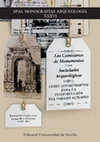
Las Comisiones de Monumentos y las Sociedades Arqueológicas como instrumentos para la construcción del pasado, 2021
[SP]Durante el último tercio del siglo XIX se observa en España, al igual que en otros muchos pa... more [SP]Durante el último tercio del siglo XIX se observa en España, al igual que en otros muchos países europeos, un repunte del interés por la conservación de los restos materiales del pasado y, en concreto, por la actividad arqueológica. Nuestra contribución tiene como objeto indagar sobre el grado en que este interés por lo que conocemos ahora como patrimonio arqueológico canalizó la sociabilidad y la socialización de, al menos, un sector de las élites burguesas del momento y hasta dónde llegó en la estructura social ese interés por las antigüedades, su excavación y sus primeras formas de valorización. Usando técnicas de investigación cercanas a las de la microhistoria, se han elegido los casos de Carmona y Osuna, localidades que experimentaron importantes procesos de excavación y valorización de yacimientos arqueológicos durante la Restauración.
[EN]In the last third of the 19th century, Spain, like many other European countries, witnessed a revival of interest in the conservation of the material remains of the past and, specifically, in archaeology. This paper will examine the degree to which this interest in what today is known as archaeological heritage channelled the sociability and socialisation of, at least, a segment of the bourgeois elite at the time. It will further seek to determine how far up the social structure this interest in antiquities, their excavation, and the early forms of showcasing their value reached. Using research techniques similar to those of microhistory, it will focus on the cases of Carmona and Osuna, two towns that saw extensive processes of excavation and showcasing of archaeological sites during the Restoration.
Expolio de Bienes Culturales. Instrumentos legales frente al mismo, 2018

Andalusian legislation prohibits unauthorised intervention on archaeological sites, whether by pr... more Andalusian legislation prohibits unauthorised intervention on archaeological sites, whether by professional archaeologists conducting excavations or amateurs searching for archaeological objects with metal detectors. The use of these devices is only permitted for research teams or in places where there is no reason to expect archaeological remains to be found. Violations of these provisions are punishable with fines and the confiscation of devices.
Contrary to the popular belief of many northern European archaeologists who write about this issue, the underlying reasoning for these restrictions is not the regular use of such devices to obtain major archaeological spoils, much less a mistrust between professional archaeologists and amateurs, but rather reasons of an axiological nature. (1) The law establishes the public ownership of archaeological heritage as a social good, the value of which supersedes private interests and the right to private property. (2) The law also provides that archaeological heritage is a finite and non-renewable resource and establishes the obligation to transmit this heritage to future generations. (3) The law promotes archaeological activities guided by an interest in historical knowledge rather than the mere pleasure of locating ‘treasure’.
The regular enforcement of this policy has led to both a decline in the number of detector users freely seeking archaeological remains at archaeological sites and a proliferation of detector users on beaches. It has also encouraged the integration of detectorists in archaeological research teams. This model emphasises demand management, based on the understanding that archaeological heritage is a finite, non-renewable resource. It thus stands in contrast to other models that aim to manage supply.
Rodríguez Temiño, Ignacio y Yáñez, Ana (2018). Los procedimientos sancionadores por el uso no aut... more Rodríguez Temiño, Ignacio y Yáñez, Ana (2018). Los procedimientos sancionadores por el uso no autorizado de detectores de metales. Reflexiones sobre una práctica imperfecta. En Ana Yáñez e Ignacio Rodríguez Temiño (eds.). El expoliar se va a acabar. Uso de detectores de metales y arqueología: sanciones administrativas y penales. Valencia: Tirant lo Blanch, pp. 281-334
La Necrópolis Romana de Carmona es un museo al aire libre que muestra las excavaciones realizadas... more La Necrópolis Romana de Carmona es un museo al aire libre que muestra las excavaciones realizadas entre 1880 y 1905 en la necrópolis sur de Carmona. Una característica singular de las tumbas de este cementerio es la presencia de pinturas murales datadas en los primeros decenios del siglo I de nuestra Era. A pesar de su mal estado de conservación, este conjunto de pinturas ha llamado la atención de los investigadores que las han estudiado desde el punto de vista estilístico y cronológico, principalmente. En este trabajo se ensaya un análisis de tipo iconográfico con el objetivo de conocer qué idea de Más Allá nos transmite la decoración con la que se revistió la morada eterna de los fallecidos
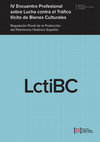
Andalucía, desde finales de la década de los sesenta ha sido objeto de un continuo expolio arqueo... more Andalucía, desde finales de la década de los sesenta ha sido objeto de un continuo expolio arqueológico, en sus dos modalidades: terrestre y subacuático. El primero de ellos ha estado asociado al uso de aparatos detectores de metales y el segundo a la extensión del buceo deportivo. Estas prácticas depredatorias del patrimonio arqueológico no solo estaban ampliamente extendidas, sino que además quedaban impunes. La alarma social generada por esa pérdida de bienes sentidos como propios en beneficio del interés de unos cuantos ha ido generando una respuesta administrativa y policial, que fue ganando peso con el desarrollo de la administración autonómica, más cercana a la realidad territorial, y con la implicación de las unidades especializadas en la lucha contra el expolio de los cuerpos y fuerzas de seguridad del Estado. En este trabajo se hace un repaso de esa respuesta, que ha hilvanado tanto la promulgación de una legislación específica, como los estudios dirigidos a evaluar ese daño y el restablecimiento de la legalidad infringida mediante el ius puniendi del Estado. Finalmente también se hace referencia a las lagunas que aún sería necesario cubrir para mejorar esa respuesta.
Actas del III Congreso de Historia. "Écija en la edad media y renacimiento". Universidad de Sevilla, Sevilla 1993: 371-382
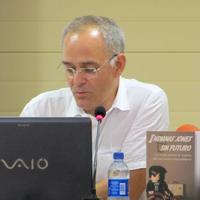

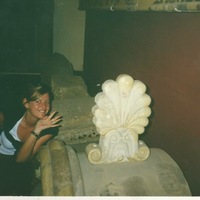




Uploads
Books by Ignacio Rodríguez Temiño
Chapters in books by Ignacio Rodríguez Temiño
Resumen: En 2006, se conoció la noticia del descubrimiento de texto con ostraca en latín y euskera, así como dibujos cristianos, durante las campañas de excavación de 2005 y 2006 en el sitio de Iruña-Veleia en Álava, España. En 2008, se demostró que estas piezas eran falsas. Ante
este engaño, llevado a cabo por algunos de los directores de las excavaciones arqueológicas, la Diputación de Álava llevó a los tribunales a los responsables de la falsificación. El tribunal los condenó por varios delitos en 2020. Este trabajo analizará el contenido de esta sentencia.
[EN]In the last third of the 19th century, Spain, like many other European countries, witnessed a revival of interest in the conservation of the material remains of the past and, specifically, in archaeology. This paper will examine the degree to which this interest in what today is known as archaeological heritage channelled the sociability and socialisation of, at least, a segment of the bourgeois elite at the time. It will further seek to determine how far up the social structure this interest in antiquities, their excavation, and the early forms of showcasing their value reached. Using research techniques similar to those of microhistory, it will focus on the cases of Carmona and Osuna, two towns that saw extensive processes of excavation and showcasing of archaeological sites during the Restoration.
Contrary to the popular belief of many northern European archaeologists who write about this issue, the underlying reasoning for these restrictions is not the regular use of such devices to obtain major archaeological spoils, much less a mistrust between professional archaeologists and amateurs, but rather reasons of an axiological nature. (1) The law establishes the public ownership of archaeological heritage as a social good, the value of which supersedes private interests and the right to private property. (2) The law also provides that archaeological heritage is a finite and non-renewable resource and establishes the obligation to transmit this heritage to future generations. (3) The law promotes archaeological activities guided by an interest in historical knowledge rather than the mere pleasure of locating ‘treasure’.
The regular enforcement of this policy has led to both a decline in the number of detector users freely seeking archaeological remains at archaeological sites and a proliferation of detector users on beaches. It has also encouraged the integration of detectorists in archaeological research teams. This model emphasises demand management, based on the understanding that archaeological heritage is a finite, non-renewable resource. It thus stands in contrast to other models that aim to manage supply.
Resumen: En 2006, se conoció la noticia del descubrimiento de texto con ostraca en latín y euskera, así como dibujos cristianos, durante las campañas de excavación de 2005 y 2006 en el sitio de Iruña-Veleia en Álava, España. En 2008, se demostró que estas piezas eran falsas. Ante
este engaño, llevado a cabo por algunos de los directores de las excavaciones arqueológicas, la Diputación de Álava llevó a los tribunales a los responsables de la falsificación. El tribunal los condenó por varios delitos en 2020. Este trabajo analizará el contenido de esta sentencia.
[EN]In the last third of the 19th century, Spain, like many other European countries, witnessed a revival of interest in the conservation of the material remains of the past and, specifically, in archaeology. This paper will examine the degree to which this interest in what today is known as archaeological heritage channelled the sociability and socialisation of, at least, a segment of the bourgeois elite at the time. It will further seek to determine how far up the social structure this interest in antiquities, their excavation, and the early forms of showcasing their value reached. Using research techniques similar to those of microhistory, it will focus on the cases of Carmona and Osuna, two towns that saw extensive processes of excavation and showcasing of archaeological sites during the Restoration.
Contrary to the popular belief of many northern European archaeologists who write about this issue, the underlying reasoning for these restrictions is not the regular use of such devices to obtain major archaeological spoils, much less a mistrust between professional archaeologists and amateurs, but rather reasons of an axiological nature. (1) The law establishes the public ownership of archaeological heritage as a social good, the value of which supersedes private interests and the right to private property. (2) The law also provides that archaeological heritage is a finite and non-renewable resource and establishes the obligation to transmit this heritage to future generations. (3) The law promotes archaeological activities guided by an interest in historical knowledge rather than the mere pleasure of locating ‘treasure’.
The regular enforcement of this policy has led to both a decline in the number of detector users freely seeking archaeological remains at archaeological sites and a proliferation of detector users on beaches. It has also encouraged the integration of detectorists in archaeological research teams. This model emphasises demand management, based on the understanding that archaeological heritage is a finite, non-renewable resource. It thus stands in contrast to other models that aim to manage supply.
The underlying reasons for these restrictions, contrary to the popular belief of many Northern European archaeologists writing about this issue, are not the habitual use of these devices in major archaeological spoils, much less a mistrust between professional archaeologists and amateurs, but others of axiological nature: A) The law establishes the destination and public ownership of archaeological heritage as a social achievement which lies above particular interest and the right to private property. B) The legislation is also aware that archaeological heritage is a finite and non-renewable resource, as well as the obligation of transmission of this legacy to future generations. C) The legislation promotes archaeological activities guided by an interest in historical knowledge and not based on the mere pleasure of location of 'treasures'.
The regular enforcement of this policy has resulted in the decrease of the number of detector users freely looking for archaeological remains in sites, as well as the proliferation of users of these devices on beaches, but also the integration of detector users in archaeological research teams. Consequently, and unfortunately, this has led many spoilers to go to other Spanish regions where law enforcement is more relaxed, to make archaeological spoils.